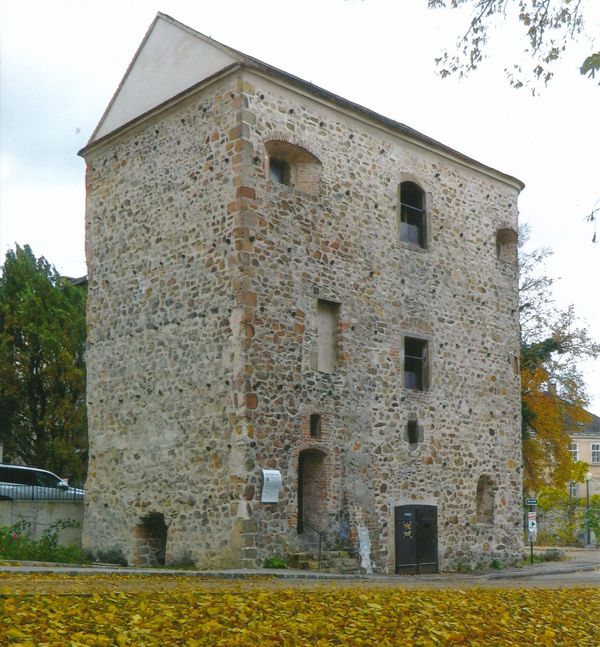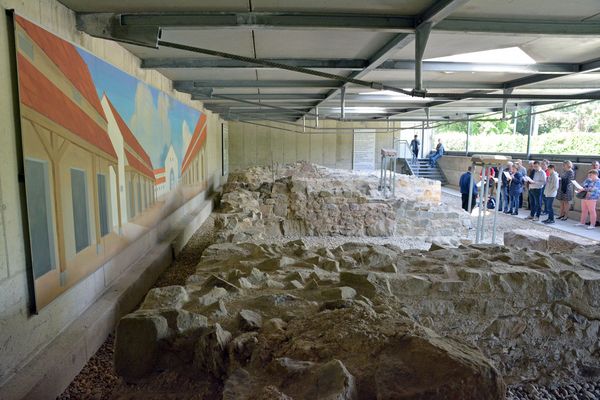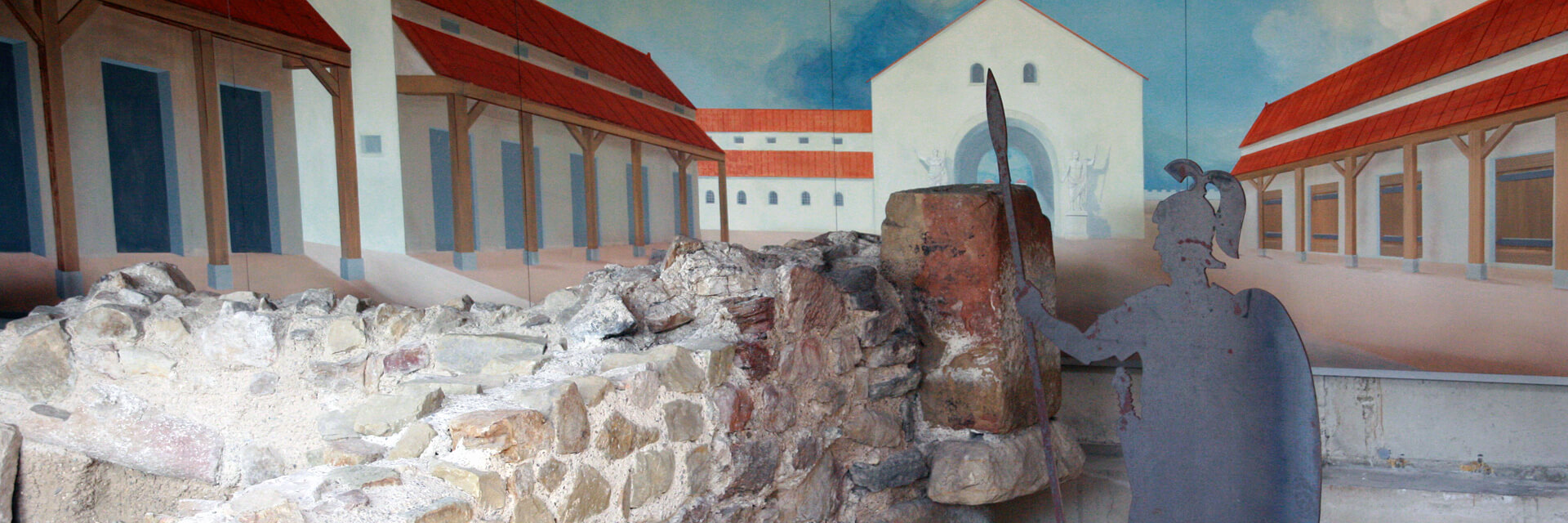Roman tower & former double gate
The tower was renovated in 1984. It was discovered that the Roman walls had been preserved up to the base of the roof. This makes it one of the few fully preserved ancient buildings north of the Alps and one of the oldest buildings in Austria. It also provides an authentic insight into the ancient city of Comagenis.
History & significance
The Roman tower dates back to the 4th century AD and was part of the late antique camp system along the Danube Limes. The massive horseshoe-shaped construction was used to secure the eastern main gate - the Porta principalis dextra - of the Roman cavalry camp "Comagenis".
In the Middle Ages, the tower was given the name "Salt Tower" - named after the salt stored here. Today it is one of the oldest buildings in Austria north of the Alps.
Architecture
Construction period: approx. 370 AD
Form: Horseshoe tower with 2.60 m thick walls
Material: quarry stone masonry with brick bands
Special feature: the original Roman structure has been preserved up to the base of the roof
Reconstruction: partially completed and secured in the 1950s and 1960s
Visit & location
Location:On the Donaulände
Viewing: Only exterior view possible
Access: Accessible around the clock, barrier-free


Ancient traces in the middle of Tulln
The ancient sights in Tulln, such as the Roman tower and the Roman double gate (Porta principalis dextra), make the town a special place along the UNESCO World Heritage Site"Danube Limes".
Visitors can experience archaeological sites here that are freely accessible and unique in Austria.
Porta Principalis Dextra
If you travel 2,000 years into the past, you enter the equestrian camp of Comagenis here: through the Porta Principalis Dextra. The remains of the eastern double gate of the camp are silent witnesses of the Roman Empire in Tulln and can be visited daily. The complex was protected by two gates and two towers. In addition to the foundations, a wedge stone of the arch and the central support stone for both arches have been preserved.
The porta principalis dextra is covered by a protective structure behind the Tulln City Museum and can be viewed from the outside around the clock.
Further tips:
Roman Museum
Danube Limes info
Guided city tours
Historic old town guide

